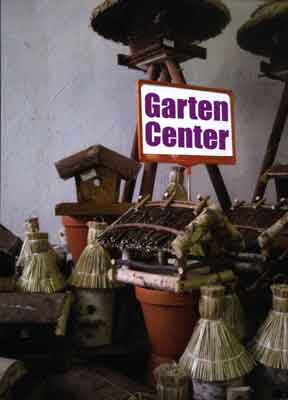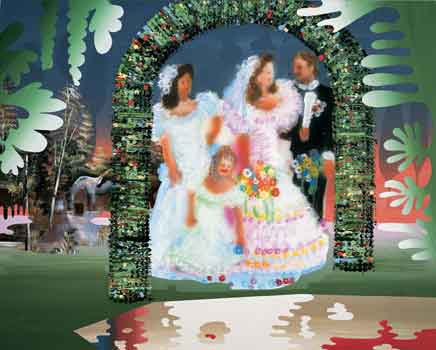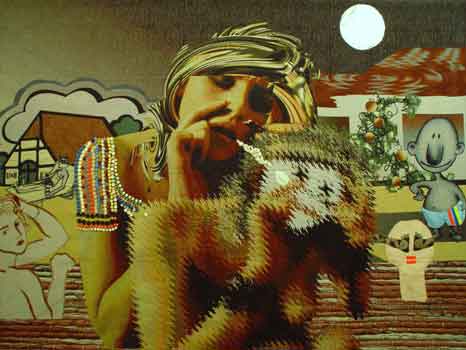
Courtesy Spencer Brownstone Gallery
The card for Bernhard Martin's show is a color photograph of several birdhouses for sale in a German supermarket, some with thatched roofs, some covered in bark or made from birch branches, some to be hung from trees, some mounted on tripods. A sign for a birdhouse for 49.99 euros with stand has been covered with a sticker that says "Garten Center." What a strange conceit, that nature could be thus arranged, that birds could even love the idea of houses with thatched roofs. It's a picture of paradise, the Garden of Eden, the Garten Center.
It is hard to know how to take this image. The objects are manufactured, sought after, and used. They are legitimate, yet seemingly beside the point, unworthy of consideration, even ridiculous. Perhaps tasteless? They are quaint and might fulfill someone's fantasy of how things should be. Birds are expected to live the lives we make for them, as we are expected to live the lives that are made for us. Anyway, they are here, and obviously have some place, in the store and beyond, in someone's back yard or estate. I don't know. They are quite ingenious, really, and they are available. Maybe it is paradise.


